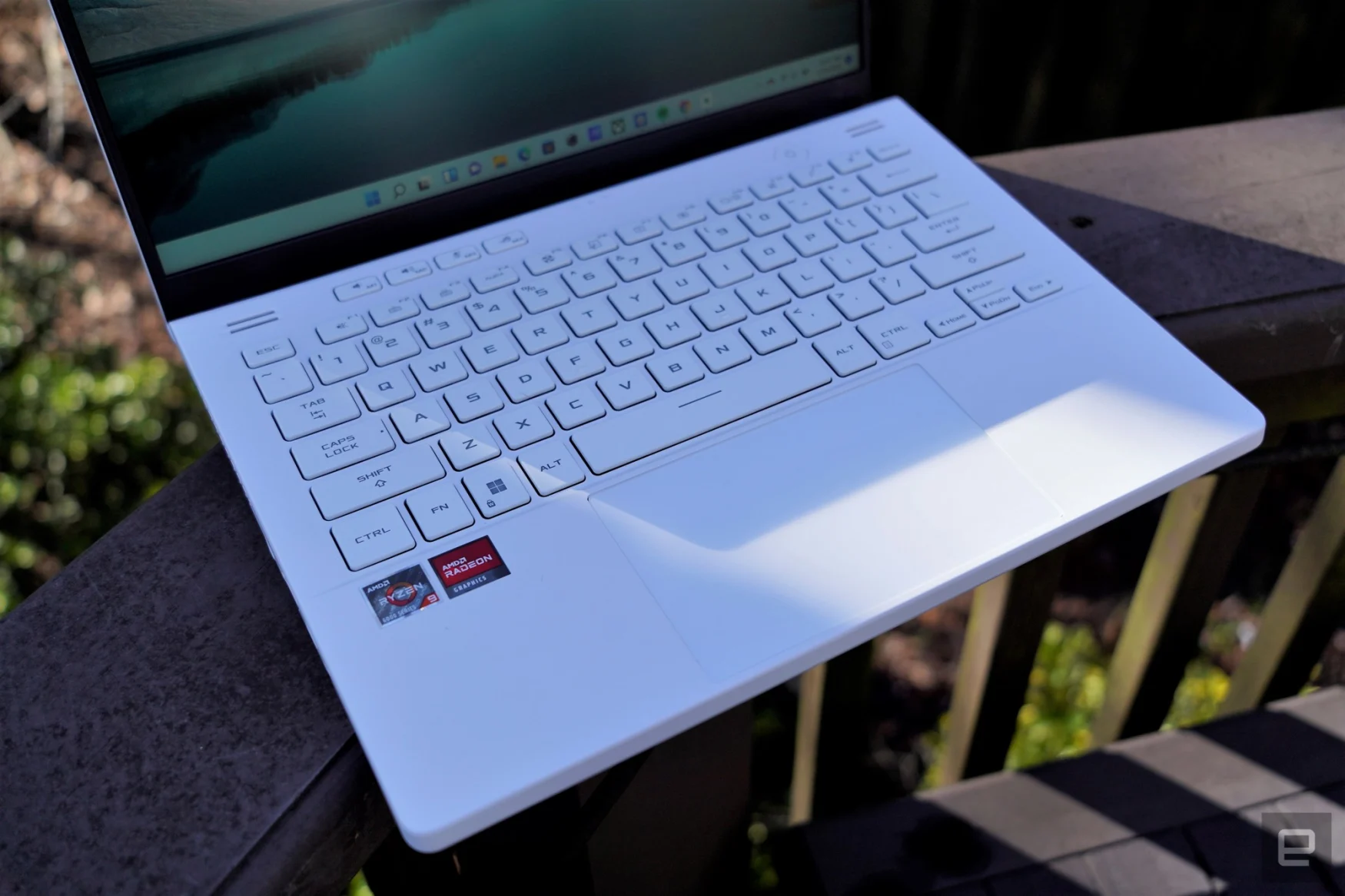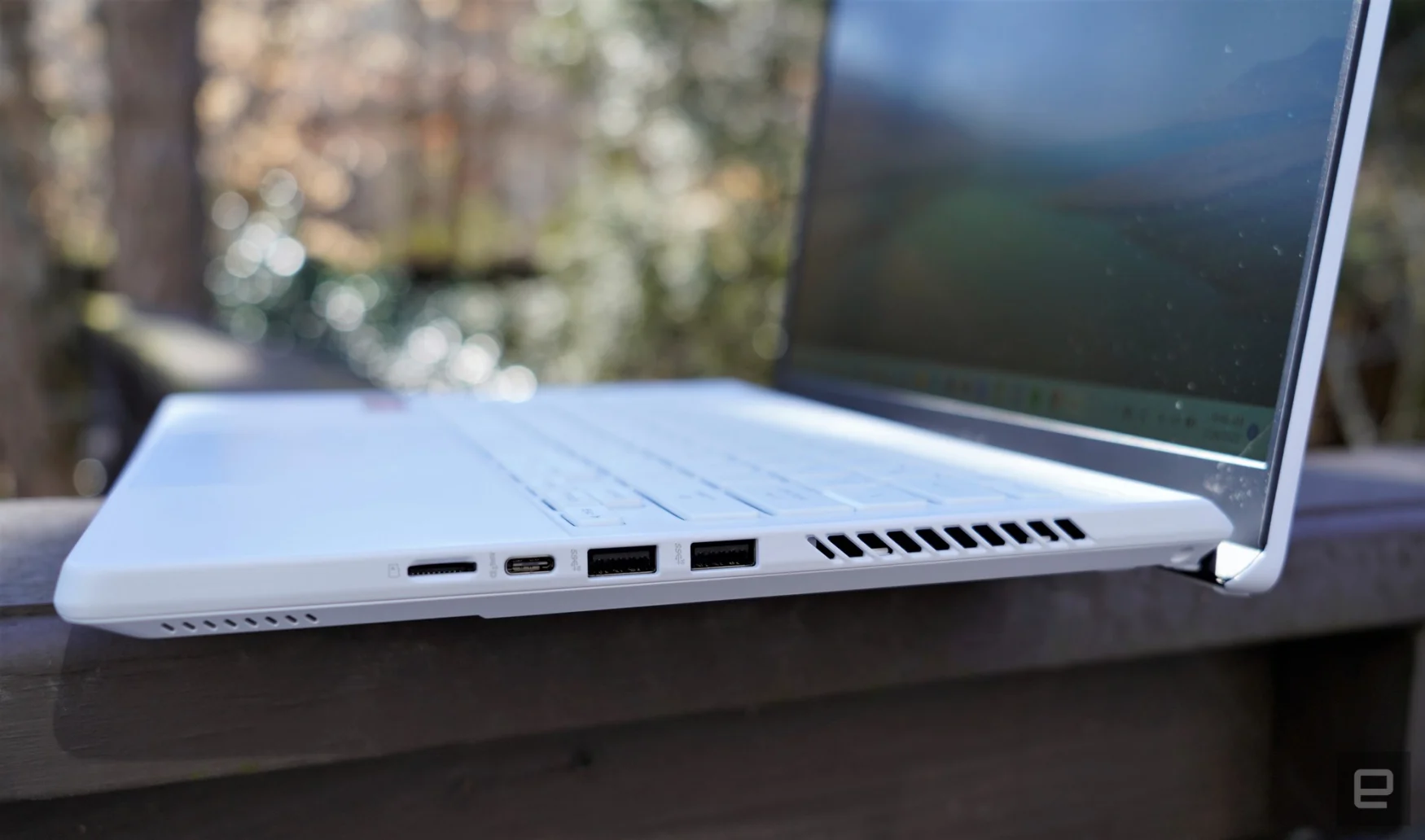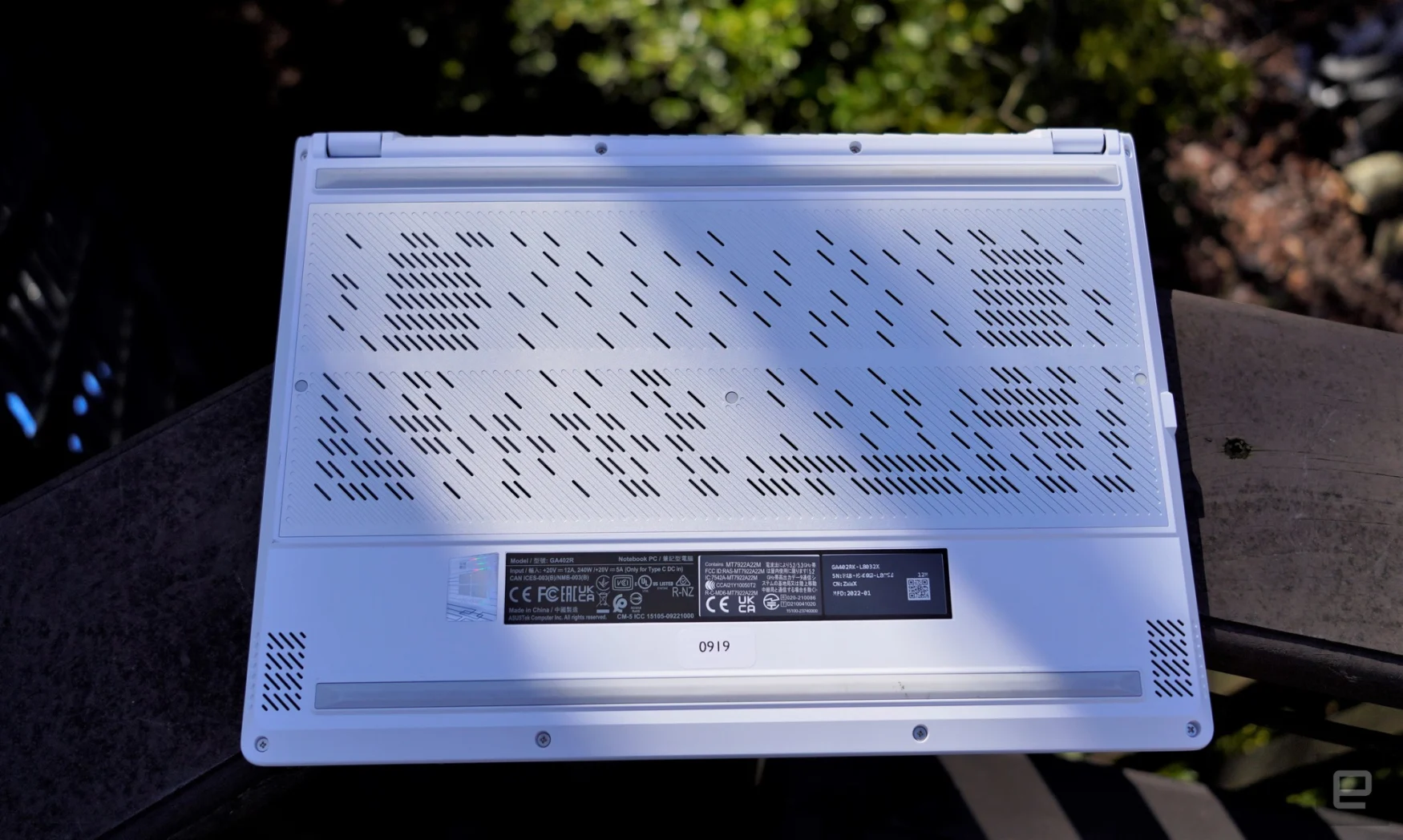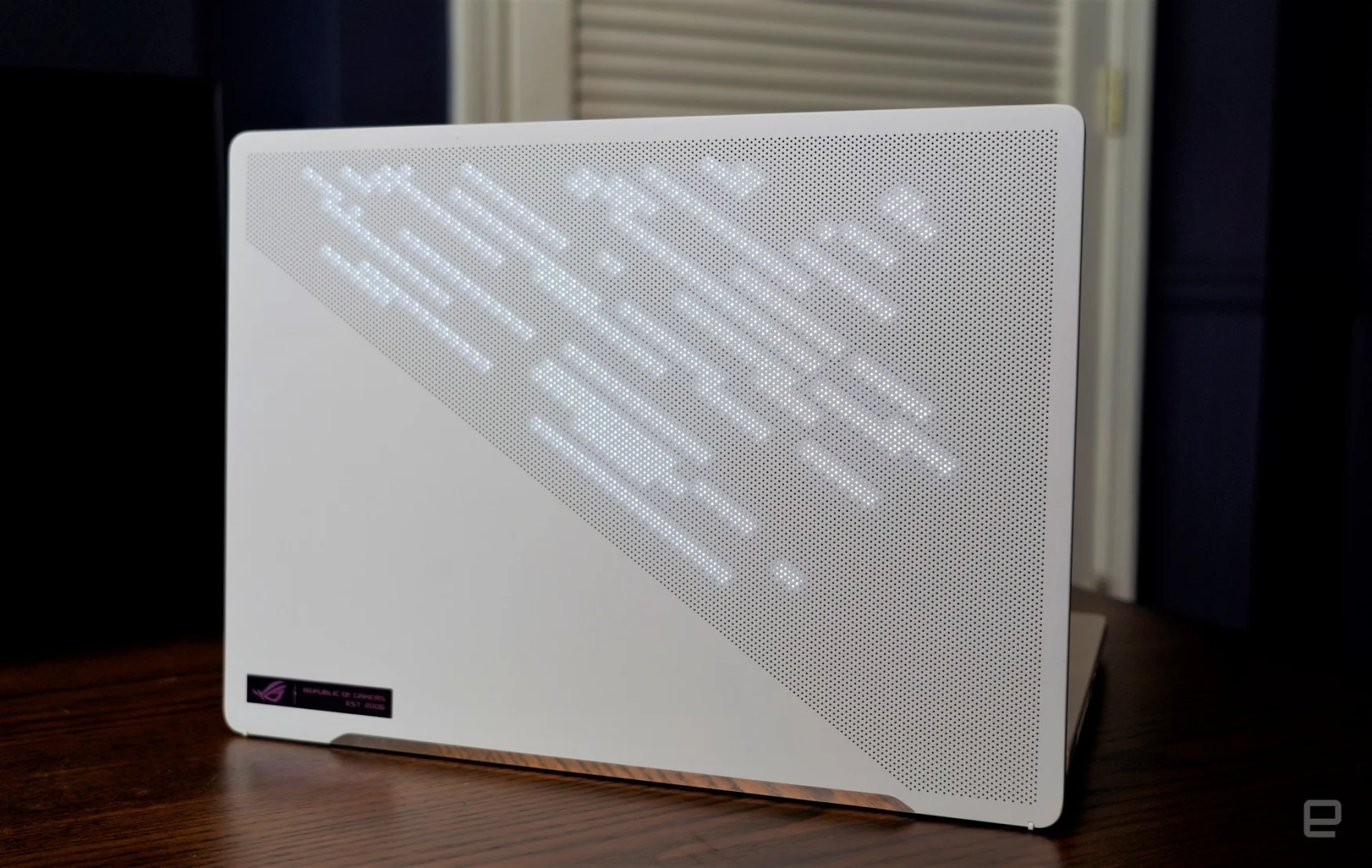It's been two years since I reviewed the first ASUS Zephyrus G14, but my fondness for it hasn't waned. It's colored my view of every gaming laptop since: Why can't they all pack in great performance in a compact 3.5-pound case for under $1,500? Now, with its latest edition, ASUS is fixing the G14's major flaw: It's finally adding a webcam. Together with AMD's latest Ryzen 6000 chips and Radeon GPUs, the 2022 G14 sounds like a dream machine on paper. But, thanks to significantly higher configuration prices, it's no longer a value-oriented machine. And that’s a shame.
Gallery: ASUS ROG Zephyrus G14 (2022) | 14 Photos
Gallery: ASUS ROG Zephyrus G14 (2022) | 14 Photos
Aside from the pricing change, though, the new Zephyrus G14 builds on everything we loved about the original. The sturdy magnesium alloy case returns, and select models feature more of ASUS's "AniMe Matrix" LEDs, which can display images and text on the back of the screen. You can choose between 14-inch 144Hz 1080p and 120Hz 1440p screens, which offer 400 and 500 nits of brightness, respectively. That's a huge leap from last year's 300-nit screen, and it makes the displays much better suited for Dolby Vision HDR (another helpful addition).
ASUS Zephryus G14 (2022)
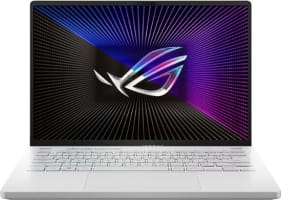
Pros
- Speedy Ryzen 6000 CPU
- Fast and efficient Radeon 6000S GPU
- Excellent Dolby Vision display
- Comfortable keyboard
- Luxuriously large touchpad
- Tons of ports
- Solid build quality
Cons
- More expensive than before
- Ray tracing still hit or miss without upscaling
And then there's the webcam. That's not something we'd usually highlight, but it's notable for the Zephyrus G14. The 2020 model was one of the first modern gaming notebooks that didn't feature any sort of camera, a move that helped ASUS achieve some impressively thin screen bezels. Given that many gamers already have better external cameras for streaming, it didn't seem like a huge deal at the time. But of course, now that many of us need to be ready to hop on a Zoom at the drop of a hat, that calculus has shifted a bit. The G14's IR camera also supports Windows Hello, so it can securely log you in without much fuss.
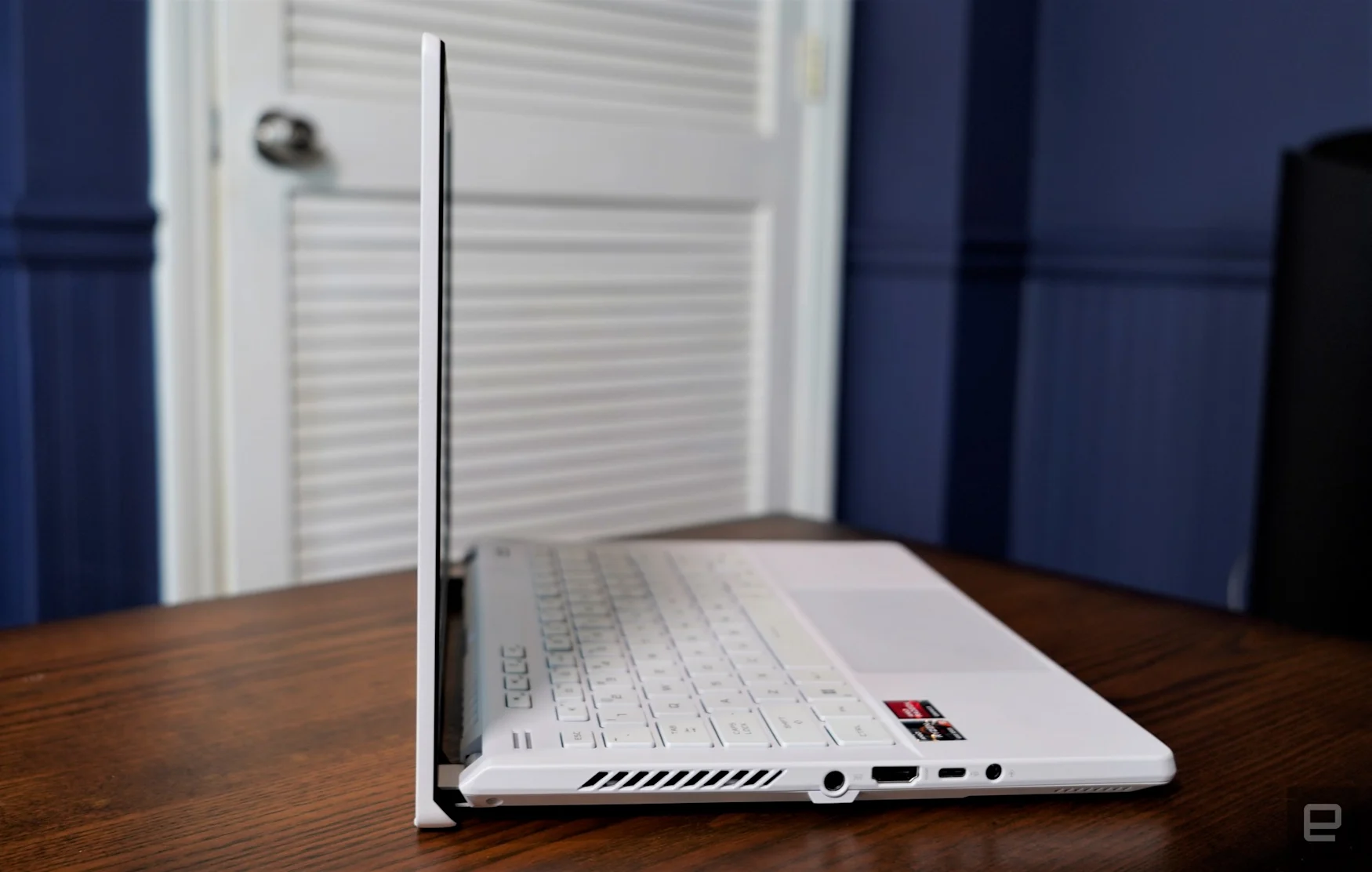
With a webcam in tow, the Zephyrus G14 has just about all of the features we'd want in a gaming laptop. And it's bolstered by impressive new hardware under the hood: the Ryzen 9 6900HS, AMD's latest eight-core powerhouse chip, as well as either Radeon RX 6700S or 6800S graphics. Those GPUs are meant for thin and light notebooks like the G14, with better performance-per-watt ratings than the previous NVIDIA RTX 3060. ASUS also ramped up cooling significantly this time around, thanks to a vapor chamber cooler and liquid metal thermal paste for both the CPU and GPU.
All of this new gear amounts to a bit more heft than the original 3.5-pound G14, unfortunately. It starts at 3.6 pounds without the AniMe Matrix LED display, and it scales up to 3.8 pounds with the LEDs. That's still relatively light compared to the competition, though. The Razer Blade 14 weighs 4.1 pounds, and the Alienware x14 comes in just under four pounds.
PCMark 10 | 3DMark (TimeSpy Extreme) | Geekbench 5 | ATTO (top reads/writes) | |
ASUS Zephyrus G14 (2022, AMD Ryzen 9 6900HS, Radeon RX 6800S) | 7,170 | 3,821 | 1,543/9,839 | 3.5 GB/s / 4 GB/s |
ASUS Zephyrus G14 (2020, AMD Ryzen 9 4900HS, NVIDIA RTX 2060 Max-Q) | 5,436 | 2,725 | 1,189/7,705 | 1.7 GB/s / 1.67 GB/s |
Alienware x14 (Intel i7-12700H, NVIDIA RTX 3060) | 7,073 | 3,362 | 1,529/13,315 | 4.32 GB/s / 4.54 GB/s |
Razer Blade 14 (AMD Ryzen 9 5900HX, NVIDIA RTX 3080) | 6,551 | 4,418 | 1,443/7,226 | 3 Gb/s / 2GB/s |
ASUS Zephyrus G15 (AMD Ryzen 9 5900HS, NVIDIA RTX 3080 Max-Q) | 6,881 | 4,530 | 1,426/7,267 | 3.3 GB/s / 2.85 GB/s |
Once I saw the Zephyrus G14 in action, I didn't mind that it was slightly heavier. Our review unit was one of the most premium options: a $2,499 configuration with the Ryzen 9 6900HS, Radeon 6800S, 32GB of DDR5 RAM and the AniME Matrix. Not surprisingly, it was a significant upgrade from the 2020-era G14 I tested, though that was also a $1,499 build with an RTX 2060. The new G14 held its own against the Razer Blade 14 and Alienware x14 in PCMark 10, Geekbench and 3DMark's TimeSpy Extreme benchmark. If you're particularly interested in multi-threaded performance, though, it's worth noting that the hybrid 12th-gen Intel CPU in the Alienware x14 practically blew away the G14.
In Halo Infinite, my current multiplayer addiction, the Zephyrus G14 hovered between 80 and 100 fps in 1440p with all of the graphics settings cranked to the max. That's perfectly playable, though it's unfortunate that such an expensive machine can't completely fill the monitor's 120Hz refresh rate. I didn't notice any tearing or stuttering though, thanks to the display's FreeSync Premium support. Older titles like Destiny 2 and Overwatch surpassed 120 fps in 1440p easily, as you'd expect. Still, the cost of our review unit never left my mind. For $2,500, I'd expect something a bit more future-proof.
As for ray tracing performance, I was pleased to see that the G14 was only slightly behind the RTX 3060-equipped Alienware x14 in 3DMark's Port Royal benchmark. Unfortunately, it's still not powerful enough to keep Control above 60 fps in 1440p with medium ray tracing settings. NVIDIA's GPUs can hit that mark by relying on its DLSS AI upscaling technology, but Control doesn't yet support's AMD's alternative, FidelityFX Super Resolution.
















